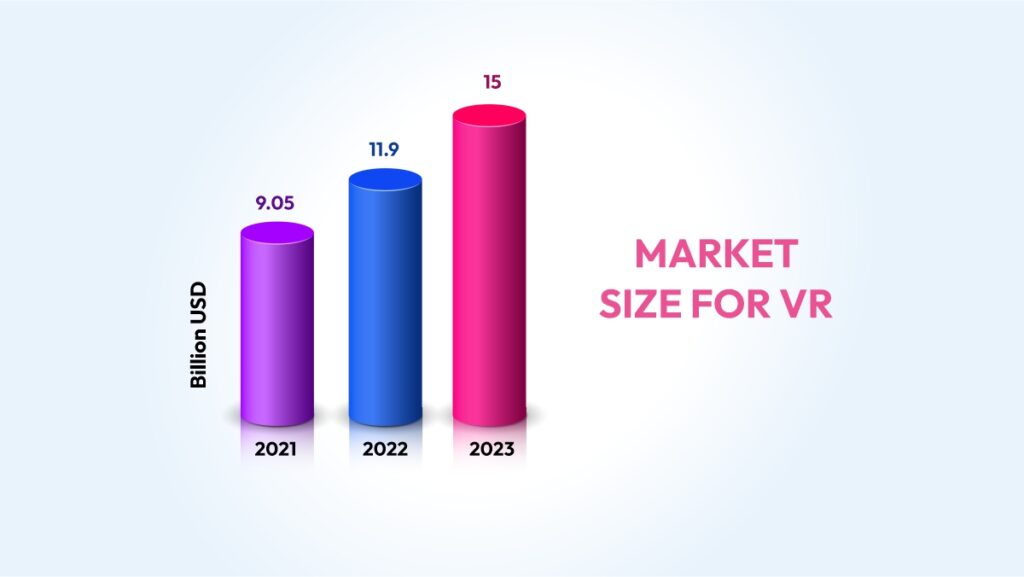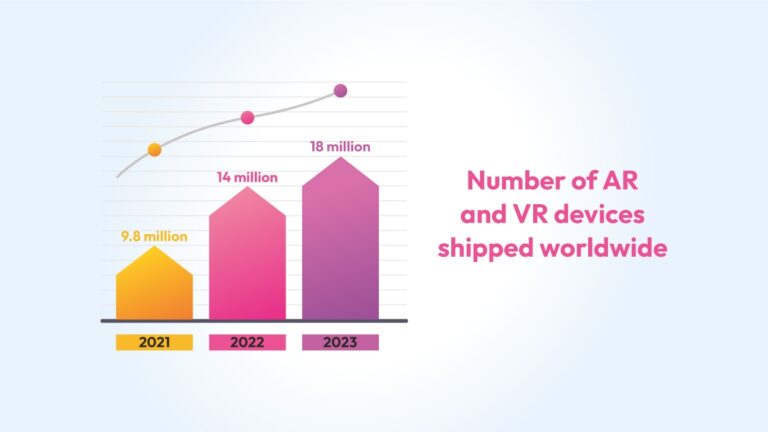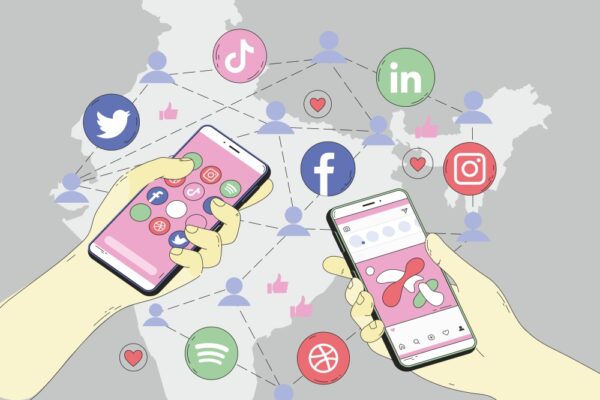The idea of augmented reality has recently gained a lot of attention from everyone who matters in the IT industry. The phrase has developed into somewhat of a buzzword and seems to be constantly appearing. It can, however, be challenging to define for those of us who aren’t IT professionals. What precisely is augmented reality, then? What impact will it have on us as digital marketers, specifically?
In augmented reality (AR), information in video, text, or images is superimposed on commonplace things in the real world using digital technology. To observe the environment with AR, the user will often need a smartphone, tablet, or headset.
Immersing the user in a brand-new world is the primary goal of VR. To replicate an alternate reality where you can feel the rush of racing cars, skydiving, or zombie hunting, you need a headgear that entirely blocks the outside world. Of course, both significantly influence marketing and are utilized in various businesses.
The user may genuinely engage with the virtual world thanks to the experience. For instance, you may use a lightsaber to slay a dragon while adjusting your motions to those of the monster’s attacks. The development of VR technology paves the way for innovative new commercial uses. The game business is no longer the exclusive home of VR technology.

Virtual Reality and Digital Marketing
When it comes to marketing, VR is still in its infancy. Still, demand is rising quickly, and businesses are experimenting with new strategies to serve their existing clientele better and draw in new ones. VR will inevitably permeate numerous commercial areas over the coming few years.
Customers are growing more and more ingenious. Therefore, businesses need to think creatively about engaging them and exceeding their expectations. The main advantages of implementing augmented and virtual reality for your company, particularly in marketing, are listed below.
The potential to connect your digital marketing campaign to the customers’ experience in fresh and creative ways is perhaps the most significant advantage AR offers. AR enables you to transform a static physical advertisement or brochure into a digital experience that can be readily connected to your digital marketing campaign. It does this by bridging traditional and digital marketing channels. Because your clients have more information at their disposal and can make decisions and complete transactions more quickly, thanks to the integration of AR into your marketing initiatives, you may improve the customer experience.
Other Areas
Doctors now have new options for developing cutting-edge medicines thanks to VR and AR. A surgical navigation system for augmented reality was designed to enable surgeons’ “X-ray vision” during complex spine surgery procedures. Therefore, virtual reality in medicine has several advantages. Virtual reality may be used in the medical profession to cure phobias and anxiety effectively. It could aid in overcoming terrifying real-world situations. To get over a phobia of heights, it is a good idea to walk virtually along a high bridge under coach supervision. VR pediatrics may make pediatric procedures for children as painless as possible. These digital technologies can also be used in physical therapy and rehabilitation.
Given the widespread use of services like Google Street View today, it is easy to assume that there will be a strong demand for trip visualization. Virtual reality travel projects have already been created, making it possible to move about the chosen area and even hear its noises, ride a boat, or ascend a mountain. There are several applications for VR in the tourist sector. First and foremost, travelling is about impressions. Therefore, an excellent engine for your project would be a virtual pre-opportunity to locate yourself in a pleasant hotel room or among fantastical fictional landscapes. Users of your travel website or app could be able to design a unique virtual tour of their preferred locations.
Thanks to VR, the ability to experience new things differently is among its most significant features. You may visualize yourself operating the vehicle, participating in the event, or accessing a novel experience via virtual reality (VR). This will increasingly be the case in the future, guaranteeing your relationship with the company is more individualized.
Contemporary times
The coronavirus has made many consumers reluctant to contact businesses at significant malls and expos, and AR and VR are prepared to fill the sales void. It would be foolish to dismiss this cutting-edge technology as far-fetched given that major internet companies like Google integrate AR into almost all apps. Brand interactions with AR/VR technology may be evaluated alongside online product listings and reviews.
As individuals continue to have hybridized virtual and in-person experiences in their personal and professional life, including group events like concerts, shows, and other activities, virtual and augmented reality will become increasingly significant. Because of the ongoing uptake of virtual experiences, marketers and advertisers may use virtual and augmented reality to offer their customers something fresh and exciting.
Complete immersion At the opposite end of the spectrum is virtual reality. In this confined virtual environment, you get the absolute sense of being there physically, and everything that happens to you feels true.Gear needed for the experience includes headphones, gloves, sensors, and movement detectors. The sensors pick up your activities and eye movements, and the computer program responds appropriately. In this virtual world, your surroundings are responding to you in line with that.
Virtual reality that is only partially immersive is called semi-immersive VR. You can roam about in a virtual environment in which you put yourself by using a VR headset or a computer screen. You get a more authentic experience by being able to observe the virtual setting. The experiences made possible by VR headsets or devices will undoubtedly be more participatory.
Semi-immersive VR strikes the right mix between price and user experience, making it perfect for marketers. On your phone, you may access certain VR activities that are only partially immersive. The virtual world adjusts to your phone’s movement in various directions.
Lets see what data tells
In 2021, almost 9.8 million AR and VR devices were shipped worldwide, and it is anticipated that in 2022, this could reach 14 million devices, and the following year in 2023, this could increase to 18 million. Hence, this market space is growing by leaps and bounds.
It is now coming to market size. In 2021 it was 9.05 billion USD. And just as we saw in the devices shipped, the hopes are delicious and robust in terms of market size. In 2022, it is expected that it can rise as high as 11.9 billion USD, and in 2023, it could clock roughly15 billion USD
Consumers may now easily skip through television ads and filter off web promotions thanks to technology. However, consumers frequently look for AR experiences, so they’re already quite interested when they come to you.
People learn differently. Hence some products have a little learning curve. The three primary learning styles are kinesthetic, aural, and visual. While a radio commercial could be interesting to an auditory student, a television ad is necessary to engage a visual learner. And neither will fully engage the kinesthetic learner’s attention (someone who needs first-hand experience). With AR, you can simultaneously reach all three learners and check off all three boxes.



